category » Nanotechnology
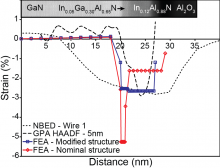
Due to its high band gap energy and superb electronic-carrier mobilities, GaN is fast becoming the material of choice for…

Semiconducting nanowire-based solar cells have gained interest because of their potential to achieve one-dimensional charge transport pathways and large interfacial…
Ge nanowires are of interest for future sub-10-nm gate length p-MOSFETs because of the excellent electrostatic control afforded by the…
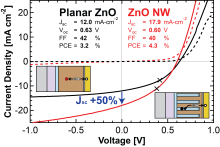
Here we demonstrate a solution-processed ordered bulk heterojunction quantum dot (QD) solar cell with AM1.5G power conversion efficiencies of up…
State-of-the-art ultrafast cathodes are based on the photoelectric effect, where electrons are emitted from a flat surface using ultraviolet (UV)…
Field emission arrays (FEAs) are an attractive alternative to mainstream thermionic cathodes, which are power hungry and require high vacuum…
Electrospray is a process to ionize electrically conductive liquids that relies on strong electric fields; charged particles are emitted from…
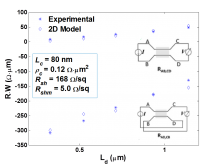
In the last few years, III-V compound semiconductors have emerged as a promising family of materials to replace silicon in…
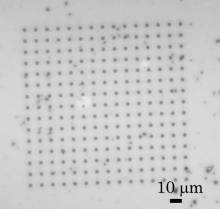
We show patterning of thin J-aggregate[1] films using nano-imprinting. Unlike the conventional microfabrication techniques, such as direct-write or lift-off processes,…
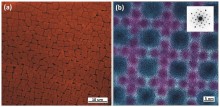
Colloidal semiconductor nanocrystals or quantum dots (QDs) offer size-tunable absorption and luminescence spectra, permitting a broad range of applications in…
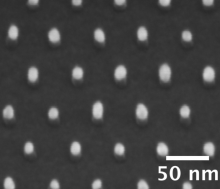
Nanostructured photocathode arrays can be used as the electron sources for the compact coherent X-ray source. Femtosecond laser pulses were…
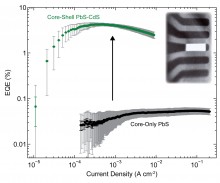
Near-infrared light sources integrated at room temperature with any planar surface could be realized by harnessing the broad spectral tunability,…

Nanostructured solar cells attract increasing attention as a promising photovoltaic (PV) technology[1]. Generation of free charge carriers in nanostructured PV…
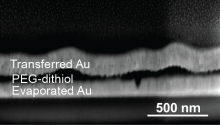
With the silicon-based electronics reaching physical limits that inhibit continued improvements in device performance, much research has been directed towards…
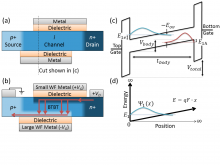
Tunneling field-effect transistors (TFETs)[1] are promising for low-power applications due to their potential to achieve a subthreshold swing (SS) lower…
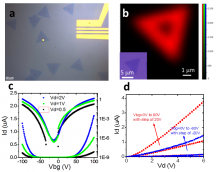
After enabling much of the modern world for more than 60 years, in the near future electronics will develop in…
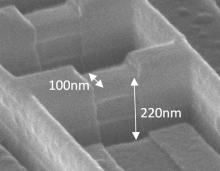
Si-based CMOS technology is approaching the limits of its capabilities, and as a result there is extensive research into looking…
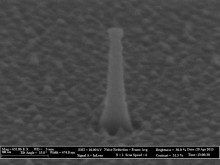
Achieving a sharp subthreshold swing (S) is crucial to enable the supply voltage scaling that is necessary to reducing power…
Currently bulk Bi and BixSb1-x have the best known thermoelectric (TE) properties at cryogenic temperatures. These properties can be further…
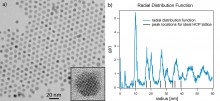
Quantum dots (QDs) are exciting materials because their bandgap is dependent on the dot size. The use of QDs allows…

Thermal management in nanoscale materials dramatically affects the efficiency of novel energy generation technologies, and engineering devices with appropriate heat…
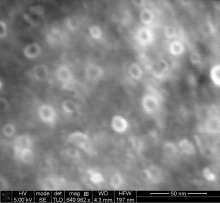
Due to their mechanical, thermal, and electrical properties and their natural ability to grow on a variety of metallic and…
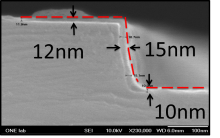
Small-molecule organic photovoltaic cells (OPVs) have the potential to be a low-cost, flexible power conversion solution to many energy problems[1]….
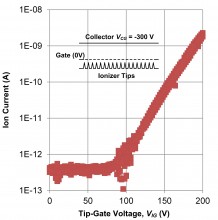
Field ion sources operate based on field ionization (FI) phenomena in which an electron tunnels out of a molecule under…
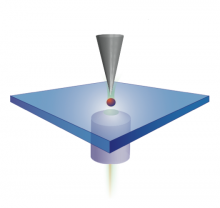
The diffusion of excitonic energy from within the photosensitive layer of a photovoltaic cell towards the charge separation interface is…
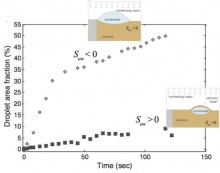
Despite years of advancement in making energy systems more efficient, the predominant mode of condensation seen in large-scale industrial processes…

Water condensation on surfaces is a ubiquitous phase-change process that plays a crucial role in nature and across a range…
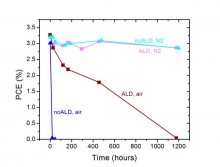
Device lifetime is a key figure of merit for solar cells and impacts the levelized energy cost ( $/(kW*hr) )…

Vapor condensation is observed in everyday life and routinely utilized in industry as an effective means of transferring heat. In…
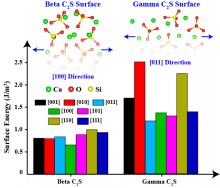
Portland cement clinker contains four major phases; alite (C3S) is the most dominant (50-70% by mass) and highly reactive with…

Solar cells based on lead sulfide colloidal quantum dots (PbS QDs) have made dramatic improvements in efficiency in recent years,…

Nanowires combine the intrinsic properties of semiconductors with low dimensionality, which makes them potential building blocks for optoelectronic applications. GaAs…
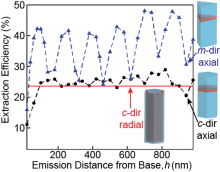
III-nitride nanowire-based light-emitting diodes (LEDs) are promising alternatives to thin-film LEDs for solid-state lighting[1]. Facile strain relaxation in nanowires allows…
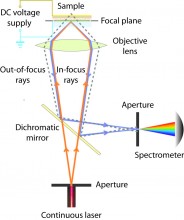
The main goal of this work is to introduce functional natural materials into the design of surface plasmonic structures and…
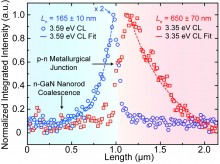
GaN-based nanowires and nanorods are promising materials systems for optoelectronic applications such as high efficiency light emitting diodes[1],[2] or low…
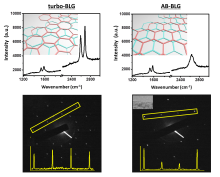
The growth of large-area bilayer graphene has been of technological importance for graphene electronics. The successful application of graphene bilayers…
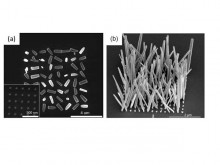
Photovoltaics (PVs) with inorganic zinc oxide nanowire (ZnO NW) active layers are possible for future generations of technology due to…
The successful fabrication of optoelectronics on economical, flexible, and lightweight substrates such as plastic and paper could pave the way…
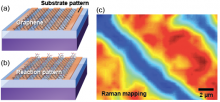
Graphene has exceptional electronic, optical, mechanical, and thermal properties, which provide it with great potential for use in electronic, optoelectronic…

A co-crystal is a crystalline material made up of two or more components. In pharmaceutical systems, co-crystallization is frequently used…

This work focuses on developing an X-ray source using microfabricated silicon field emission devices. In the X-ray source, the electrons…
Carbon nanotube (CNT) composites are promising new materials for structural applications thanks to their mechanical and multifunctional properties. We have…

We have integrated ultra-porous (99% porous) elements (nanoporous forests of vertically aligned carbon nanotubes (VACNTs)) in MEMS, showing their use…
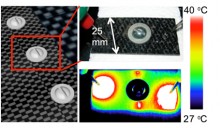
Catastrophic structural failures cause many physical and personal losses, with prevention estimated at billions of dollars in savings each year….
In this work we fabricate and study junction between a single walled carbon nanotube (SWNT) and a monolayer of graphene…
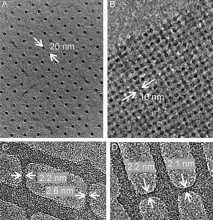
Electron-beam lithography (EBL) readily enables the fabrication of sub-10-nm features[1]. However, the resolution limits of this technique at length scales…
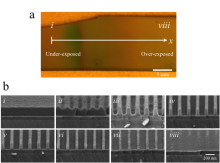
Interference lithography (IL) is one of the most effective and low-cost approaches for large-area nano-patterning and nanostructure fabrication; IL has…
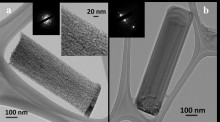
Capacitors with high capacitance density (capacitance per footprint area) have potential applications in autonomous microsystems and for power management in…
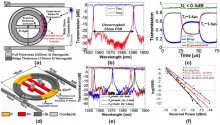
Silicon photonics enables wavelength-division multiplexed (WDM) networks to be efficiently and cost effectively implemented on chip with potential for multi-terabit/s…
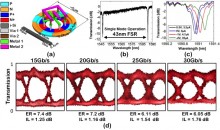
On- and off-chip bandwidth and energy scaling are pushing the limits of CMOS and VCSEL technology, which allow only a…
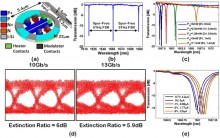
Wavelength division multiplexed systems can achieve high bandwidth by utilizing many channels on a single fiber as opposed to current…
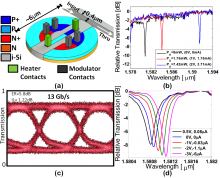
Silicon photonics, because it enables wavelength division multiplexed (WDM) systems, will help to minimize the number of fibers required in…
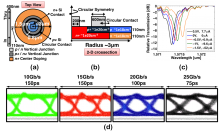
High-performance computing systems require high bandwidth, low power, and scalable optical interconnects to maintain balanced communications in future exascale machines….
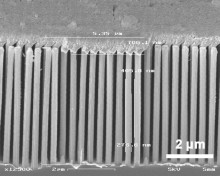
Silicon nanowires (NWs) have attracted interest for sensing applications due to their high surface-to-volume ratios. When a NW is configured…
Formerly we presented results of our theoretical agglomeration model for chemical mechanical planarization (CMP) under the primary motivation of understanding…
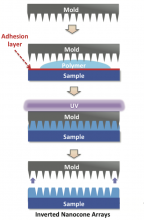
Inspired by natural structures in insect compound eyes, nanocone structures form an effective medium with an axial gradient in the…
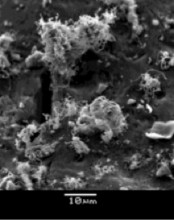
This work focuses on the development of non-metallic nanoparticles (NPs) that can catalyze carbon nanofiber (CNF) and nanotube (CNT) growth…
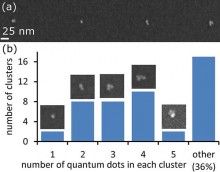
Semiconductor colloidal quantum dots (QDs) are electronically quantized systems with promising applications in optoelectronic devices[1]. A key aspect of such…

Superconducting nanowire single-photon detectors (SNSPDs)[1] based on niobium nitride (NbN) nanowires have shown high speed (< 3ns dead time[2] )…
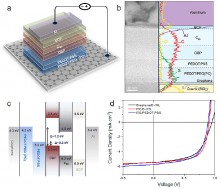
The high transparency of graphene[1], together with its good electrical conductivity[2] and mechanical robustness[3], enable its use as transparent electrodes…

Electromagnetic phased arrays at radio frequencies (RFs) are well known and have enabled applications from communications to radar, broadcasting, and…
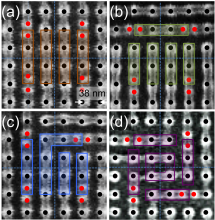
Templated self-assembly of block copolymers using topographic templates is attractive because it can generate dense nanoscale patterns over a large…

Engineered surfaces have received significant interest for a wide range of applications including microfluidics, drag reduction, self-cleaning, water harvesting, anti-corrosion,…

Recent advances in fluorescence microscopy have enabled spatial resolution below the diffraction limit by localizing multiple temporally or spectrally distinguishable…
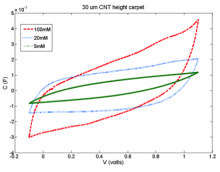
Manipulation and control of transport at nanometer length scales offers new opportunities to enhance the performance of water desalination systems[1]….
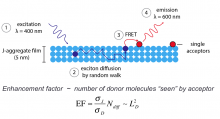
Nature presents us with a fundamental mismatch between the “size” of visible light (~250 nm in free space) and the…